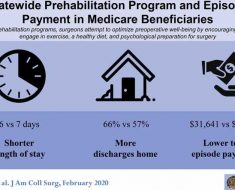Various triggers can cause anaphylaxis during peanut oral immunotherapy (POIT), but they’re preventable, a small retrospective study suggests.
“Anaphylaxis episodes during POIT can occur both during dose escalation and maintenance phases,” Aikaterini Anagnostou, MD, PhD, and her co-authors at Baylor College of Medicine in Houston, Texas, write in a Letter to the Editor published this month in Pediatric Allergy and Immunology.
“In our real-world cohort…anaphylaxis was often the result of previously reported avoidable triggers,” they add. “Patients must be educated on these in an effort to prevent adverse outcomes.”
New, Effective Therapy With Unknown Long-Term Risks
Since the US Food and Drug Administration approved Peanut (Arachis hypogaea) Allergen Powder-dnfp (Palforzia) in 2020, POIT has been helping peanut-allergic patients avoid anaphylaxis, but not much is yet known about anaphylaxis risk during long-term therapy.
To address this knowledge gap, investigate anaphylaxis episodes during dose escalation and maintenance, and identify potential risk factors and avoidable triggers, Anagnostou and her colleagues reviewed the records of anaphylaxis episodes in 75 patients aged 3-17 years who completed POIT at one academic research center between 2017 and 2021.
All patients started at 2 mg of peanut protein (pp) and gradually increased their monthly intake to a maintenance dose of 300 mg pp at approximately 9 months. At that point, 15 patients chose to increase their doses to 450-900 mg per month, and three opted to stay at 150 mg. Monthly maintenance follow-up ranged from 8-42 months.
Study findings show that, overall, 17% of patients experienced anaphylaxis episodes: 53% during dose escalation, 47% during maintenance, and no anaphylaxis reported after 16 months of treatment.
Anaphylactic reactions were more likely in older patients and in those with higher baseline peanut-specific immunoglobulin E (IgE) and Ara h2 (the strongest predictor of peanut allergy).

Dr Tiffany Owens
Tiffany Owens, MD, assistant professor of allergy and immunology at The Ohio State University Wexner Medical Center in Columbus, said by email that, with POIT being a new treatment, clinicians are gathering and sharing data to help them fine-tune their patient management.
“An important detail of this study is that the odds for anaphylaxis increased with age,” noted Owens, who was not involved with this research. “Additional studies will be needed to determine if older individuals are candidates for POIT, or if this is a better therapy for younger food-allergic children.”
The findings highlight important triggers, including exercise, viral illness, dosing on an empty stomach, hot shower soon after dosing, and accidental peanut exposure.
Safe for Most, but Monitoring and More Research Needed
Providers need to educate patients on avoiding risk factors and managing risk, Antonella Cianferoni, MD, PhD, associate professor of pediatrics specializing in allergy and immunology at Children’s Hospital of Philadelphia, told Medscape Medical News by email.

Dr Antonella Cianferoni
“Food allergy affects between 5% and 8% of children, and all forms of allergy immunotherapy, including POIT, are associated with a small risk for anaphylaxis,” Cianferoni, who was not involved in the study, said. “Peanut and other food allergies are lifelong, and life-threatening reactions are unpredictable.”
“This study confirms that, while food immunotherapy requires education, vigilance, and availability of epinephrine, it is overall safe and well tolerated by most patients,” she added.

Dr Rachel Robison
Rachel G. Robison, MD, associate professor of pediatrics specializing in allergy and immunology at Vanderbilt University Medical Center in Nashville, Tennessee, noted that other studies support the idea that higher baseline peanut-specific IgE is linked with increased reactions to POIT.
“Notably, although some patients were followed up to 42 months, no systemic reactions occurred beyond 16 months,” Robison, who also was not associated with the study, said by email. “Following a larger population long-term may give better insight as to whether these reactions truly lessen over time.
“Increased age being associated with more systemic reactions deserves more study,” she added.

Dr Edwin Kim
Edwin H. Kim, MD, director of the UNC Food Allergy Initiative at the University of North Carolina School of Medicine at Chapel Hill, said that these results are “a reminder that we need to keep our guard up at all times during treatment.” Kim was not a part of this research team.
While the benefits of POIT are clear, patients and their providers need to balance the benefits with the risks, he said by email.
“POIT, with its strong desensitization potential, can be a fantastic therapy for peanut allergy; however, the risk that comes with it may not make it the best medicine for every peanut-allergic patient,” Kim advised.
“For those who might struggle to avoid triggers, peanut oral immunotherapy might not be the best therapy, and waiting for alternative therapies might be the better choice.”
Funding information was not provided. Anagnostou reports relevant financial relationships with DBV Technologies and Aimmune Therapeutics. Robison reports relevant financial relationships with Aimunne Therapeutics. Two co-authors, as well as Cianferoni, Owens, and Kim, report no relevant financial relationships.
Pediatr Allergy Immunol. Published online December 4, 2022. Letter to the Editor
For more news, follow Medscape on Facebook, Twitter, Instagram, YouTube, and LinkedIn
Source: Read Full Article





